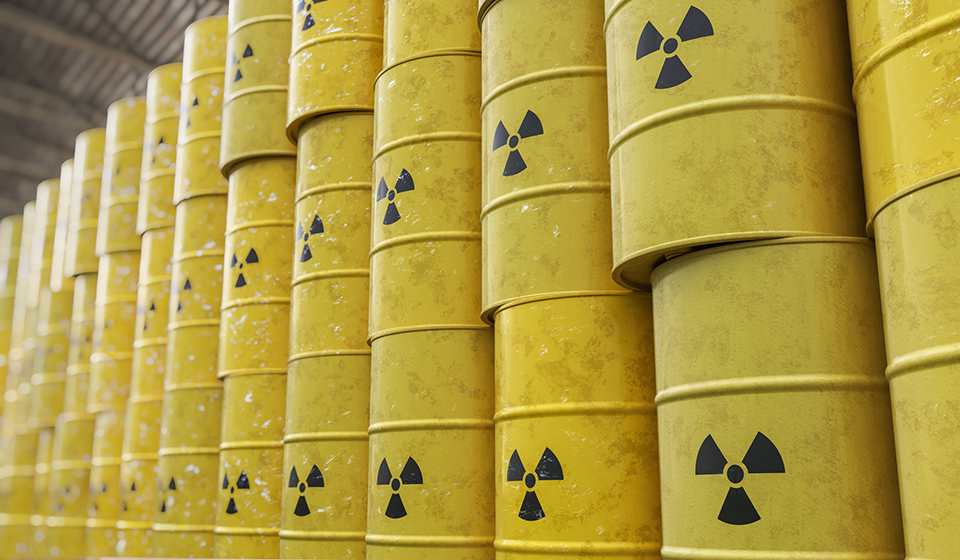CSUN Prof’s Reports Raise Concerns About the Transportation of Nuclear Waste

Two reports CSUN criminology and justice studies professor James David Ballard professor raise concerns about the safety of transporting highly radioactive nuclear waste across the country to storage facilities in the American Southwest. Photo by ©iStockphoto.com vchal
Two reports submitted to the U.S. Nuclear Regulatory Commission by a California State University, Northridge professor raise concerns about the safety of transporting highly radioactive nuclear waste to two proposed interim storage facilities located about 40 miles from each other in the American Southwest.
Criminology and justice studies professor James David Ballard conducted lengthy analyses of proposals to build nuclear waste interim storage facilities in Andrews County, Texas, and in southeast New Mexico, near the Eddy-Lea county line. Ballard’s reports do not focus on security at the proposed sites themselves, but the risks to people and places along the routes that trains and trucks would take to transport the nuclear waste from their points of origin to the facilities.

Criminology and justice studies professor James David Ballard
“We’re talking about over 100 different points of origin all over the country,” Ballard said. “The nuclear waste would be traveling over thousands of miles of railways and, to a lesser extent, highways, over hundreds of bridges and through many tunnels. It would be traveling through small towns and major cities like Chicago — all across the U.S.
“At any point along the way, the shipment is vulnerable to attack,” he said. “Not just to attack from terrorists, but maybe from somebody who has a grudge against the companies or personalities involved, or someone who wants to make a political statement. The shipments are also vulnerable to human error. For example, someone hits the wrong switch along the rail line, the trains get going too fast around a curve. The chance of natural disasters also exist — consider one of those 100-year floods that to seem to be happening more and more frequently. This [type of] event could wash out a railroad bridge.
“We need to consider these issues before final decisions are made about the facilities,” he said. “We need to consider not just whether the storage facilities themselves are secure, but are the routes to get the waste to the facilities are safe as well.”
Ballard has spent more than two decades studying the nuclear industry and its radioactive waste. Over the years, he has submitted dozens of reports and given testimony to the Nuclear Regulatory Commission, Congress, National Academy of Sciences and other governmental agencies about the issues he says the government and industry need to take into account as they look for ways to dispose of nuclear waste.
He submitted a 69-page report in September to the Nuclear Regulatory Commission with his comments about the proposed Holtec HI-STORM UMAX interim storage facility in New Mexico. Ballard also submitted a 77-page report to the commission in October with his concerns about the proposed Interim Storage Partners Consolidated interim storage facility in West Texas. Ballard expects to testify before the commission next year about the issues raised by his reports.
Ballard said the companies responsible for the proposed storage facilities and governmental agencies need to “think seriously” about the “what ifs” that could occur if something disastrous happens while the nuclear waste is en route.
“If an accident happens in a rural community, the odds are the responders will be volunteer firefighters,” he said. “Will those volunteer firefighters have the right equipment and training to deal with a radiative emergency? If something happens along a mountain pass, are there more than one or two escape routes for the residents? And if an accident happens in someplace like Chicago, are the people and the government prepared for the long-term consequences?”
Ballard said a radiological disaster would not only impact the public’s health and the environment, but it also would affect local businesses, community social structures, the national economy, public policy and the public’s faith in its government.
“We have only to look at what happened with Fukushima to see that Japan and its residents are still dealing with the accident at the Fukushima Daiichi Nuclear Power Plant, nearly eight years after that disaster,” he said. “No one thought that an earthquake and then [the resulting] tsunami would impact the plant the way they did. But they did.”

 experience
experience